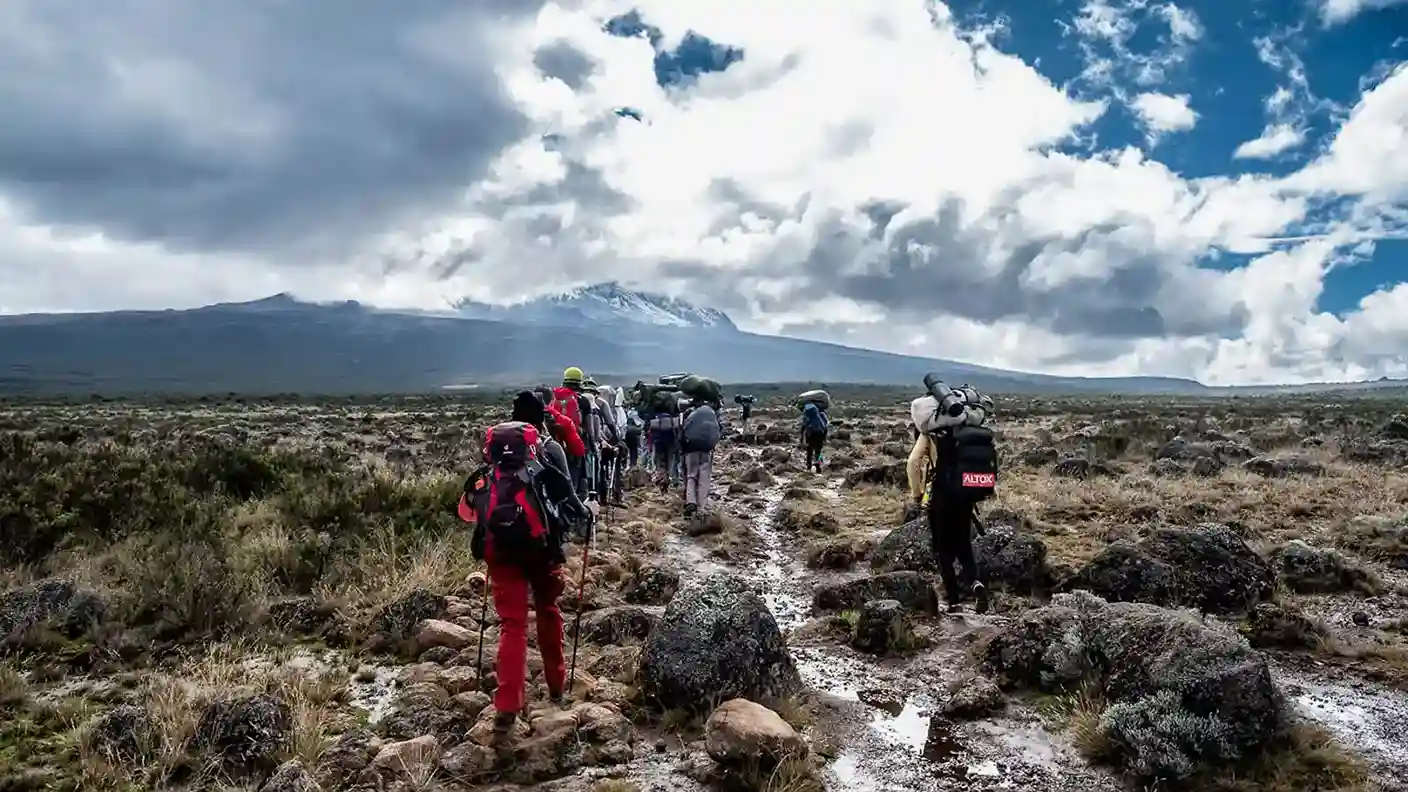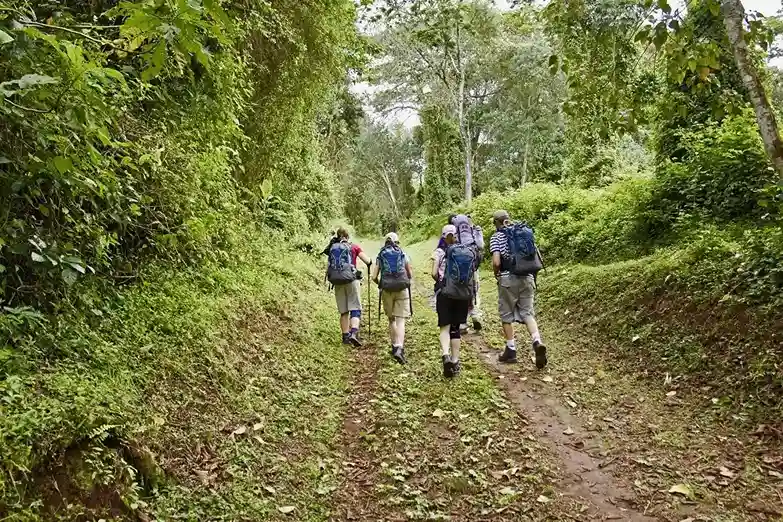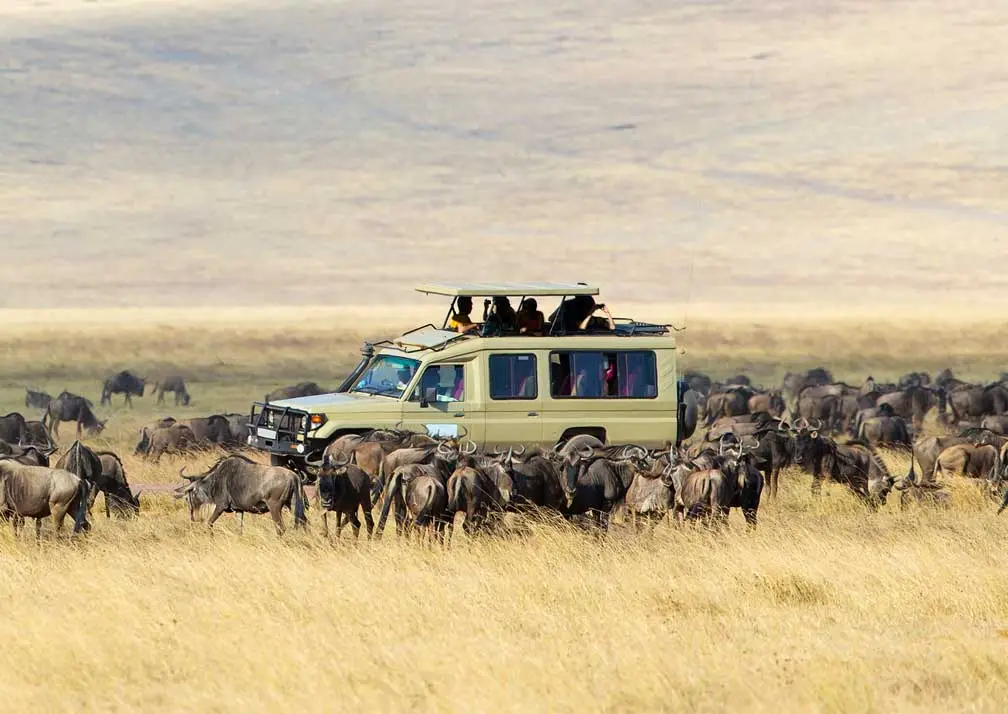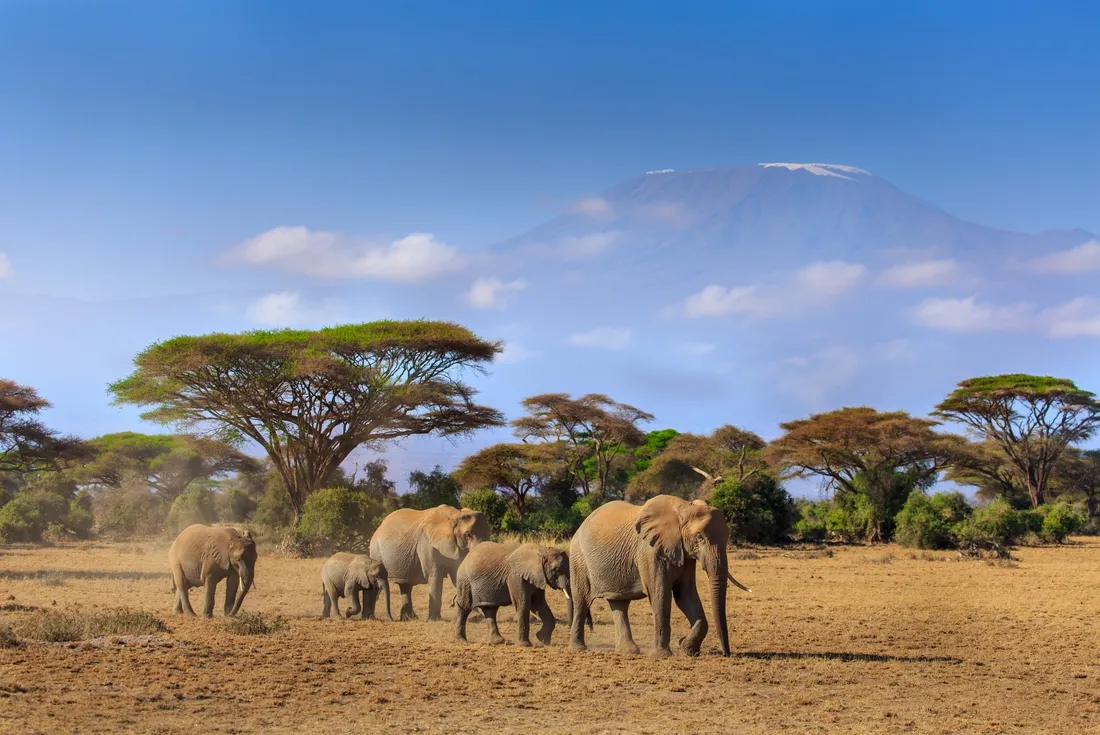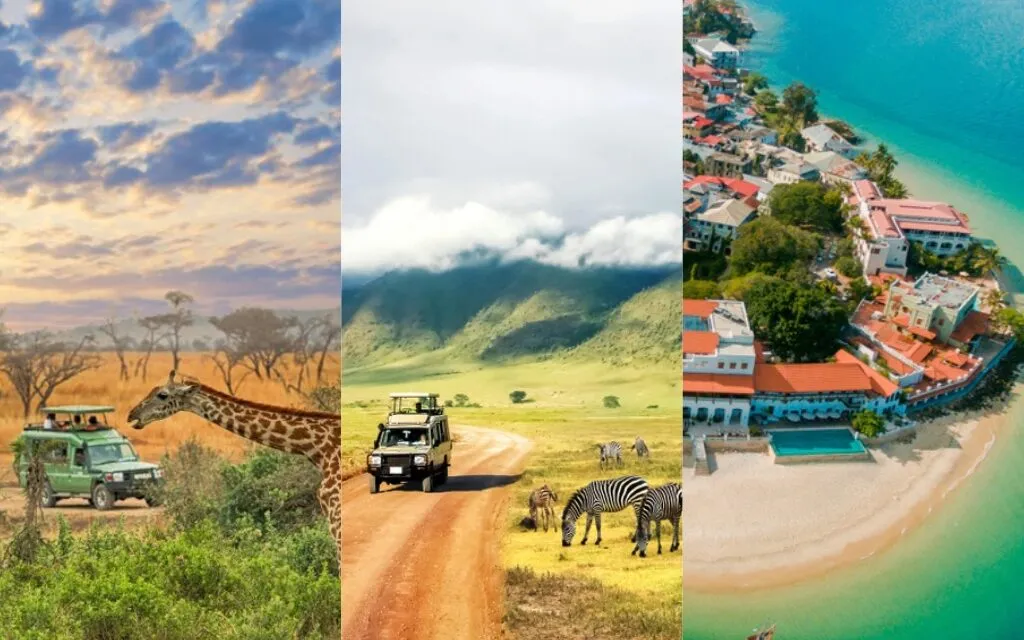Kilimanjaro Climbing via Machame Route – 6–7 Day Trekking Tours
Embark on a thrilling Mount Kilimanjaro Machame Route climb with Capable Africa Tours. Known as the “Whiskey Route,” this scenic Machame Route Kilimanjaro climb offers 6–7 day trekking tours through lush rainforests, the Shira Plateau, and the iconic Uhuru Peak summit. With an 85–90% success rate on our 7-day Kilimanjaro trekking packages Machame, our guided tours include expert Kilimanjaro Machame Route porters and guides for a safe, memorable journey. Explore the best Machame Route tour packages, Kilimanjaro trekking prices for 2025, and preparation tips for your Kilimanjaro climbing tour in Tanzania. Plan your Machame Route hike Kilimanjaro today!
Book Your Machame Route Trek NowMachame Route Kilimanjaro Climb Highlights
- Duration: 6–7 Days, Customizable Kilimanjaro trekking packages
- Destination: Mount Kilimanjaro, Tanzania (5,895m)
- Main Focus: Scenic Machame Route hike, Uhuru Peak summit
- Tour Style: Guided Machame Route group or private climbs
- Best Time: January–March, June–October for optimal conditions
- Ideal For: Adventure seekers, first-time Machame Route trekkers
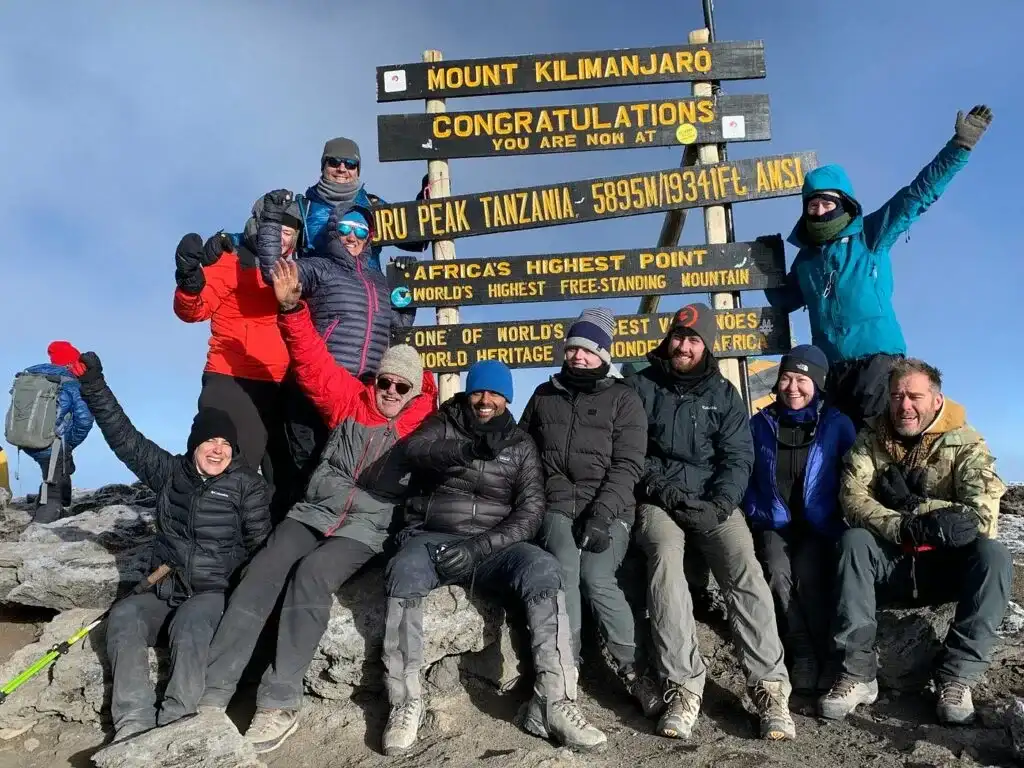
Introduction to Mount Kilimanjaro Machame Route
The Mount Kilimanjaro Machame Route climb, nicknamed the “Whiskey Route,” is a premier Kilimanjaro climbing tour in Tanzania, renowned for its scenic beauty and high success rate. Starting from the Machame Route starting point in Moshi, this 6–7 day Machame Route Kilimanjaro climb takes you through lush Machame Route forests, moorlands, and the breathtaking Shira Plateau to the iconic Uhuru Peak summit (5,895m). With an 85–90% Machame Route success rate on the 7-day itinerary, this route’s acclimatization advantage makes it a top choice among Kilimanjaro trekking packages. Capable Africa Tours, a trusted Kilimanjaro climbing operator in Tanzania, ensures a safe and unforgettable Machame Route hike with expert guides and porters.
Whether you’re a seasoned trekker or a fit beginner, the Machame Route Kilimanjaro climb offers a perfect blend of challenge and stunning scenery, from the Barranco Wall to the starry summit night. Start planning your 2025 Kilimanjaro climbing adventure today!
Why Choose the Machame Route for Kilimanjaro Climbing?
The Machame Route Kilimanjaro climb is a favorite for its diverse landscapes and high summit success rate, making it a standout among Kilimanjaro trekking packages. Unlike the Marangu Route’s hut-based setup, the Machame Route camping experience immerses you in nature with tented camps amidst the Machame Route forest, Shira Plateau, and alpine deserts. Its “climb high, sleep low” Machame Route elevation profile enhances acclimatization, boosting your chances of reaching Uhuru Peak. The Machame Route difficulty is moderate, ideal for adventurers seeking a rewarding Kilimanjaro climbing tour in Tanzania.
With Capable Africa Tours, your guided Machame Route climb includes small group or private options, eco-friendly practices, and expert Kilimanjaro Machame Route porters and guides. It’s the ultimate choice for a scenic and successful 2025 Kilimanjaro adventure.
Machame Route Itinerary: 6 or 7 Days
The Machame Route itinerary for 6 or 7 days offers a structured Mount Kilimanjaro Machame Route climb through diverse ecosystems. The 7-day Machame Route Kilimanjaro climb includes an extra acclimatization day at Karanga Valley, increasing summit success by 10–15%. Here’s the 7-day itinerary for your Kilimanjaro climbing tour in Tanzania:
- Day 1: Machame Gate to Machame Camp (7 km, 5–7 hours, 1,800–3,000m): Start your Machame Route hike from Moshi through lush rainforests.
- Day 2: Machame Camp to Shira Camp (5 km, 4–6 hours, 3,000–3,840m): Ascend to the scenic Shira Plateau during your Kilimanjaro trekking tour.
- Day 3: Shira Camp to Barranco Camp (10 km, 6–8 hours, 3,840–3,950m): Climb to Lava Tower (4,600m) for acclimatization, then descend.
- Day 4: Barranco Camp to Karanga Camp (5 km, 4–5 hours, 3,950–4,035m): Tackle the iconic Barranco Wall Machame Route challenge.
- Day 5: Karanga Camp to Barafu Camp (4 km, 4–5 hours, 4,035–4,673m): Prepare for the Machame Route summit night at base camp.
- Day 6: Barafu Camp to Uhuru Peak & Mweka Camp (12 km, 10–14 hours, 4,673–5,895m–3,100m): Summit at dawn, then descend to Mweka Camp.
- Day 7: Mweka Camp to Mweka Gate (10 km, 3–4 hours, 3,100–1,640m): Complete your Machame Route Kilimanjaro climb through rainforest.
The 6-day Machame Route itinerary skips Karanga Camp, combining it with Barafu Camp for a faster Kilimanjaro climbing Machame Route adventure, ideal for experienced trekkers.
Machame Route vs. Marangu Route: Which is Better?
When comparing Machame Route vs. Marangu Route, the Mount Kilimanjaro Machame Route climb offers a scenic, tent-based experience with an 85–90% success rate for the 7-day itinerary due to its acclimatization advantage. The Marangu Route, with hut accommodations, has a 70–75% success rate due to its faster ascent. The Machame Route’s diverse landscapes, including the Machame Route forest and Shira Plateau, make it ideal for adventurers seeking a true Kilimanjaro trekking experience, while Marangu suits those prioritizing comfort.
How Hard is the Machame Route Kilimanjaro Climb?
The Machame Route difficulty is moderate, making it a challenging yet achievable Kilimanjaro climbing tour in Tanzania. Daily Machame Route daily distances range from 4–12 km, with steep sections like the Barranco Wall and a demanding summit night (10–14 hours). The Machame Route elevation profile peaks at 5,895m, with acclimatization at Lava Tower (4,600m). Our Machame Route altitude sickness tips include choosing the 7-day itinerary, staying hydrated, ascending slowly, and consulting your doctor about Diamox to ensure a safe Machame Route hike Kilimanjaro.
What’s Included in Our Kilimanjaro Trekking Packages Machame
Our Kilimanjaro trekking packages via Machame Route are designed for a seamless Mount Kilimanjaro Machame Route climb. Here’s what’s included and excluded:
Inclusions
- Round-trip transfers from Moshi or Arusha
- Expert Kilimanjaro Machame Route porters and guides
- Kilimanjaro National Park entry fees
- Full-board meals and purified water
- High-quality Machame Route camping gear (tents, mats)
- Oxygen tanks and first-aid kits for safety
- Pre- and post-trek lodging in Moshi
Exclusions
- International flights to Tanzania
- Travel or medical insurance
- Tips for Machame Route porters and guides (~$15–20 pp/day)
- Personal gear (sleeping bags, trekking poles)
- Alcoholic beverages
- Tanzania visa fees
Best Time to Climb Kilimanjaro via Machame Route
The best time to climb Kilimanjaro via Machame Route is during the dry seasons: January–March and June–October. These months offer clear skies, stable weather, and optimal conditions for a Mount Kilimanjaro Machame Route climb. Wet seasons (April–May, November) bring rain, making trails slippery and increasing Machame Route difficulty. Plan your 2025 Kilimanjaro trekking tour for the dry season to maximize your summit success.
Machame Route Climb Preparation Tips
Proper Machame Route climb preparation is key to a successful Kilimanjaro climbing Machame Route adventure. Begin training 3–6 months in advance with cardio, strength workouts, and long hikes (5–8 hours) with elevation gain. Study the Machame Route elevation profile, peaking at 5,895m, to prepare for altitude. To combat altitude sickness, opt for the 7-day Machame Route itinerary, stay hydrated, and consider Diamox. Our Kilimanjaro climbing operators in Tanzania provide detailed pre-trek briefings for your Machame Route hike Kilimanjaro.
Machame Route Packing List for Kilimanjaro
A comprehensive Machame Route packing list ensures comfort during your Kilimanjaro trekking tour. Here’s what to pack for your Mount Kilimanjaro Machame Route climb:
- Layered Clothing: Moisture-wicking base layers, fleece, and waterproof jacket for Machame Route weather.
- Hiking Boots: Waterproof, broken-in boots for Machame Route trails.
- Sleeping Bag: Rated for -15°C for cold Machame Route summit nights.
- Trekking Poles: For stability on the Barranco Wall Machame Route challenge.
- Headlamp: With extra batteries for Machame Route summit night.
- Water Bottles: 3 liters capacity with purification tablets.
- Sunscreen & Sunglasses: SPF 50+ and UV-protective glasses.
- Medications: Diamox for Machame Route altitude sickness prevention.
Machame Route Scenic Highlights
The Mount Kilimanjaro Machame Route climb is renowned for its breathtaking scenery, including:
- Machame Route Forest: Lush rainforest with colobus monkeys and vibrant flora.
- Shira Plateau: Expansive views of Kibo Peak during your Kilimanjaro trekking tour.
- Barranco Wall: A thrilling climb with panoramic vistas.
- Uhuru Peak: Stunning sunrise at Africa’s highest point.
Capture these Machame Route scenic highlights with a camera for unforgettable Kilimanjaro Machame Route photos and memories.
Machame Route Summit Night Details
The Machame Route summit night is the pinnacle of your Kilimanjaro climbing Machame Route adventure. Starting at midnight from Barafu Camp (4,673m), you’ll ascend 1,222m over 6–8 hours to reach Uhuru Peak (5,895m). This cold, steep climb requires headlamps, warm layers, and determination. Guided by our expert Kilimanjaro Machame Route porters and guides, you’ll witness a breathtaking sunrise at the summit, making your Machame Route hike Kilimanjaro unforgettable. Descent follows to Mweka Camp for rest.
Trusted Kilimanjaro Climbing Operators in Tanzania
Capable Africa Tours is a leading Kilimanjaro climbing operator in Tanzania, offering affordable Machame Route trekking packages with a 90% client satisfaction rate. Our experienced guides, trained in wilderness first aid, ensure a safe Machame Route Kilimanjaro climb, while our porters handle gear, letting you focus on the trek. We support local communities with fair wages and eco-friendly practices, making us a top choice for your 2025 Kilimanjaro trekking tour.
Kilimanjaro Machame Route Photo Gallery
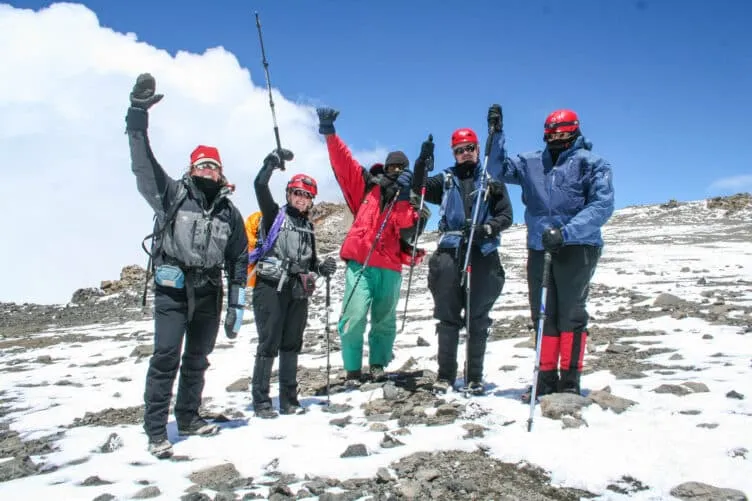
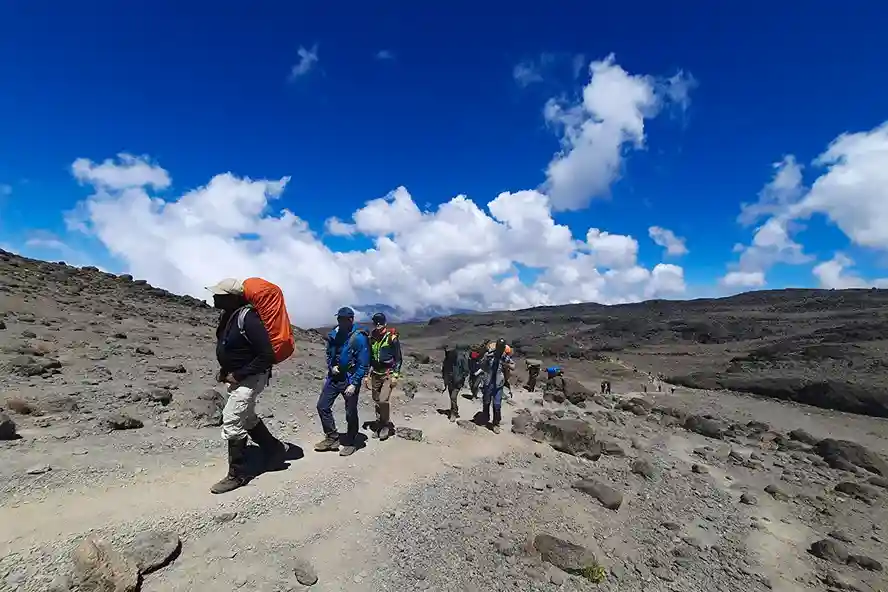
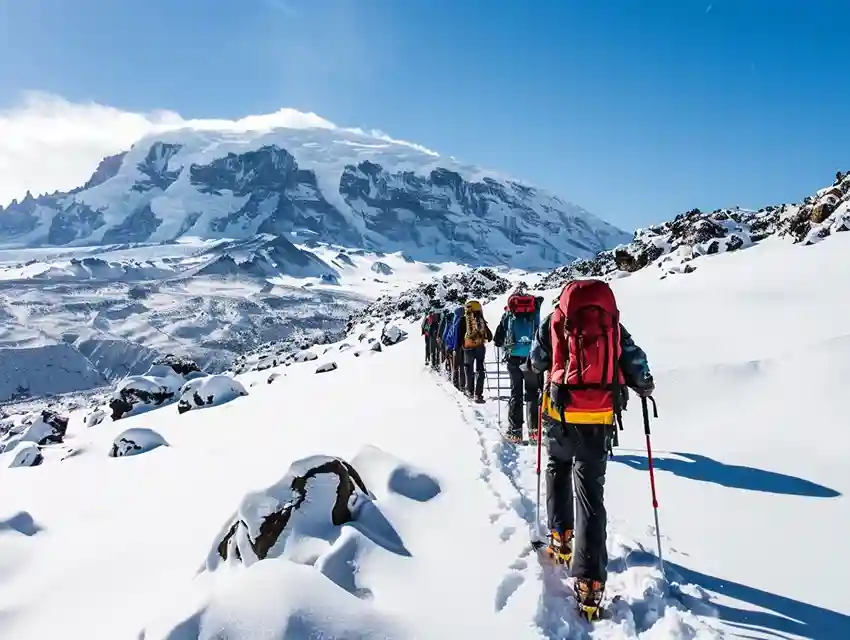
Experience the Machame Route Kilimanjaro Climb
Explore the stunning landscapes of the Mount Kilimanjaro Machame Route climb, from lush Machame Route forests to the iconic Uhuru Peak summit, with Capable Africa Tours.
Kilimanjaro Trekking Prices 2025 for Machame Route
Kilimanjaro trekking prices for the Mount Kilimanjaro Machame Route climb range from $1,800 to $3,500 per person, depending on duration, group size, and inclusions. Here’s a breakdown of our affordable Machame Route trekking packages:
- Budget Group Climb: From $1,800 pp (shared tents, group Machame Route hikes).
- Mid-Range Group Climb: $2,200–$2,800 pp (small groups, quality gear).
- Private Climb: From $3,000 pp (personalized Machame Route Kilimanjaro climb).
Contact us for tailored Kilimanjaro trekking packages Machame for 2025!
Ready for Your Mount Kilimanjaro Machame Route Climb?
Join Capable Africa Tours for an epic Machame Route Kilimanjaro climb. Experience guided Kilimanjaro trekking tours, stunning Machame Route scenic highlights, and expert support to reach Uhuru Peak. Combine with a Serengeti safari for the ultimate Tanzania adventure.
- 85–90% Machame Route success rate with 7-day itinerary
- Expert Kilimanjaro Machame Route porters and guides
- Eco-friendly Machame Route camping experience
- Machame Route group climbs or private options
- Supports local communities and conservation
Limited spots for 2025 Kilimanjaro climbing Machame Route tours—book your Machame Route hike now!
Book Your Kilimanjaro Trek Now
